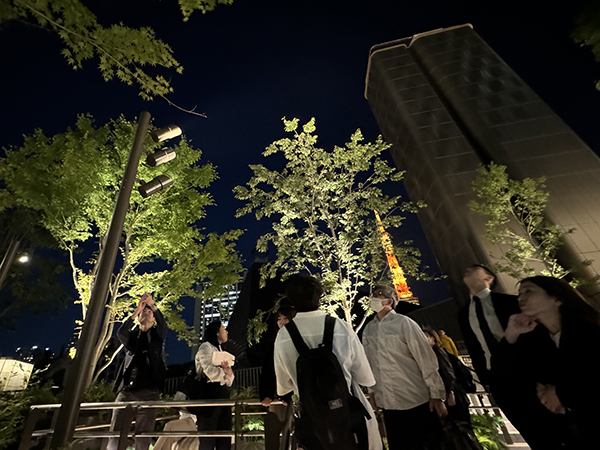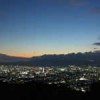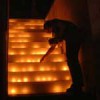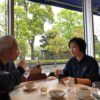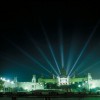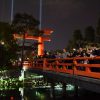Observe the nightscape of the newest spot, Azabudai Hills~Toranomon Hills
2024.0 5.10 Shinichi Sakaguchi + Amane Kotani+ Naoko Oguchi+ Yuko Nakayama
Eight months have passed since the last city night survey in September last year. The first city night survey in a while took place in Azabudai Hills and Toranomon Hills Station Tower, two of the hottest areas in this year. A large group of 43 people enjoyed walking around this newest spots.

A walking tour of two new hot spots in Tokyo, Azabudai Hills and Toranomon Hills Station Tower.
Due to the abundance of sights, most groups focused on Azabudai Hills, and ended up speed-walking through Toranomon Hills Station Tower as time ran out.
■ Group 1
Group1 focused on Azabudai Hills. At the entrance to the Garden Plaza, the first building in Azabudai Hills, the unanimous hero of the survey was the lighting embedded only in the automatic doors as a “modest welcome mat”. Conventionally, downlights on the ceiling surface would be used to illuminate the entrance, but integrating them with the doors keeps the doors out of the shadows and makes for a more beautiful entrance. By using this method, there is no need to worry about interference from guide lights, etc., and the floor can be well illuminated.
Once you pass through the garden plaza and step outside, the lighting in the landscape is much more subdued, and you are drawn to the lighting of the stores. What caught our attention was the entrance to the building, with its origami-like ceiling surface and lighting that naturally floated above the unevenness of the ceiling. However, once inside, the sloped ceiling with high luminous flux downlights made for a very glaring effect. We had the strong impression that the round shape of the downlights was in conflict with the intent of the wired ceiling design. In addition, lighting fixtures with different color temperatures were used, which led to a discussion as to what the intention was.
We passed through a supermarket with such an overwhelming red color scheme that it felt like the ceiling was on fire. After that, we explored the sophisticated space illuminated by curved indirect lighting and glare-less downlights. Our tour of Azabudai Hills ended there.
With little time remaining, we went through the Toranomon Hills Station Tower to investigate the building. The building has become a landmark, with symbolic images projected under the eaves of its exterior, and is visible from the surrounding area. The building was interesting to look at, with different lighting faces in the distant view (top, high-rise), mid-range view (the volume that jumped out), and near view (the digital art part), bringing out the good qualities of the architecture and the building was interesting to look at. (Amane Kotani)



■ Group 2
Group 2 walked from Azabudai Hills, past Mori JP Tower, through the central plaza to Sakuraba Dori Street. We thought the new Azabudai Hills would be full of heroes but we also found some villains, and it was a nostalgic and refreshing experience to walk the streets with a large group of people. The first thing that caught everyone’s tention was the NOA building! It was a bit surprising that many people rated the lighting of the entrance as HERO in contrast to the slightly eerie feeling outside.
Next, heroes and villains intersected at the entrance to Mori JP Tower. The lighting on the exterior wall was highly evaluated for its high illumination and uniformity maintained by indirect light from the top and spotlights from the front, but the shadows of the three-dimensional letter grew longer, making us think that indirect lighting was still difficult.
When we went to the central plaza, we found the spotlights that lit nowhere. We would have liked to ask the person who installed these lights what they were illuminating!
The most impressive feature of Sakuraba Dori Street was the lighting up of the plants! We felt that the trees were carefully lit up here. And the difference in color between the gold and silver of the Dior and Cartier was very impressive and wonderful. We could see many different faces around Azabudai Hills, but if we took more time to walk around, we might have found more things. Tokyo Tower was the most conspicuous everywhere at anytime. (Shinichi Sakaguchi)
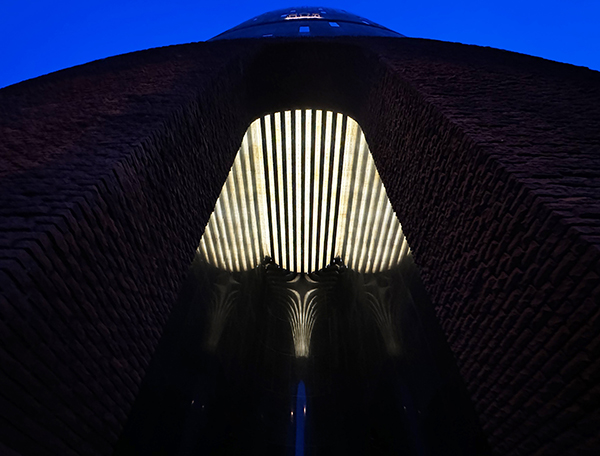
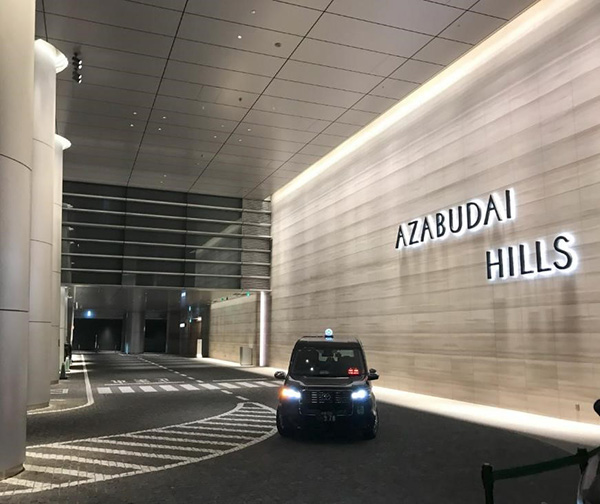

■ Group 3

The group 3 surveyed the area from Azabudai Hills to Toranomon Hills Station Tower. The high-rise JP Tower, visible from the bridge near the residence, was lit with simple vertical lines on the upper levels to emphasize its height, while the low-rise commercial facilities were softly illuminated with warm color temperatures, creating a perfect balance between the two as a hero.
In contrast, the lighting of the railing of the bridge, which serves as the viewpoint, was white and abrupt compared to the others, giving the impression that the view of Azabudai Hills was interrupted here, making it a villain.
Some said that the large roof of the central plaza of the Tower Plaza has no glare from any angle and that the unique structure of the large canopy is beautifully expressed by the lighting, while others said that the color temperature, which is set higher than that of the building, seems incongruous. The space had a strong impact, with a mixture of opinions on both sides.
The Toranomon Hills Station Tower is well received by visitors, as the ceiling at the outdoor entrance of the tower has a dynamic lighting display that guides the viewer upward, giving them a sense of the scale of the Station Tower. Some commented that the light in the ceiling slit of the atrium, which is the first thing one sees when entering the building, gives a futuristic impression by reflecting and shimmering the dynamic geometric ceiling, while others said that although it is for dramatic effect, the light emitted from the side could be too bright depending on the angle of view. The Toranomon Hills area is a very popular area. The Toranomon Hills area is characterized by vertically-expanding, linear forms and plans with sharp, urban lighting, while Azabudai Hills has a horizontally-expanding, flowing plan, with lights that are not showy and with careful attention to the color temperature of the residences, giving the entire area a gentle impression. It was a very interesting experience for me to be able to investigate the contrasting plans of the two cities at the same time. (Naoko Oguchi)


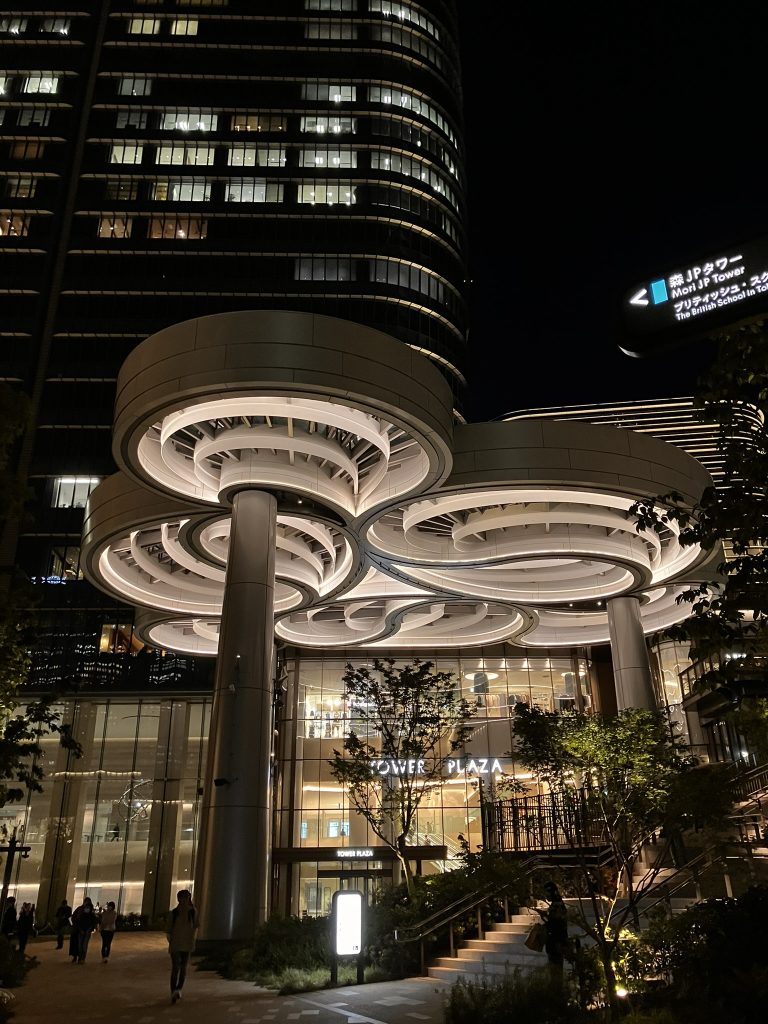
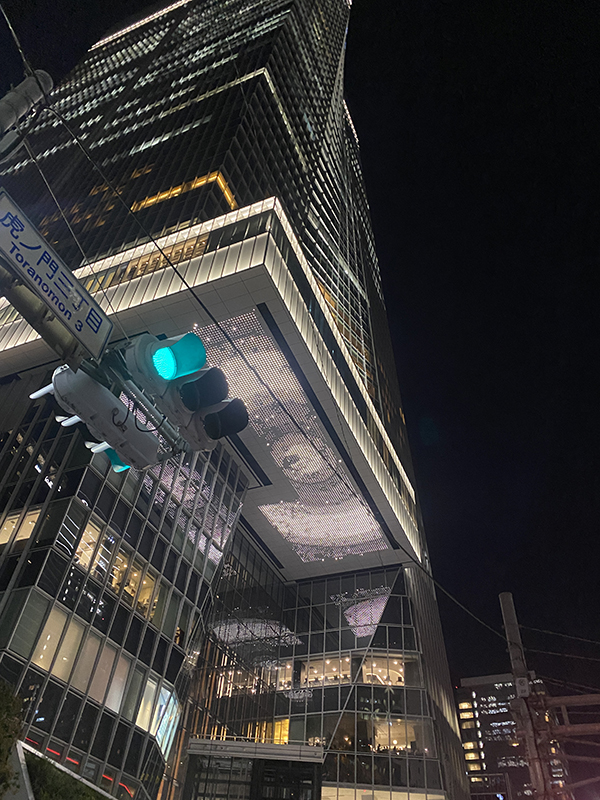
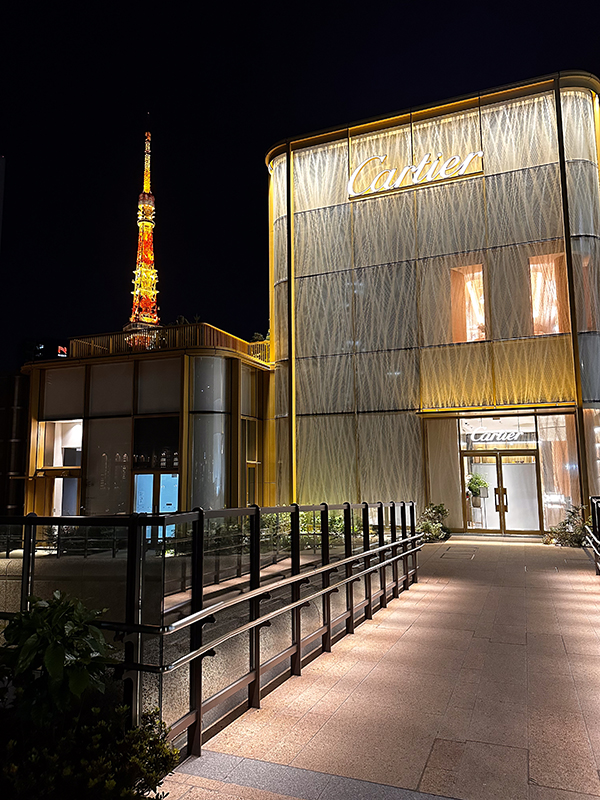
■Group 4
Group 4 left Kamiyacho Station for Azabudai Hills via Zojoji Temple. The view of Zojoji Temple, Tokyo Tower, and skyscrapers from the front side of Zojoji Temple’s main hall was particularly noteworthy. It truly symbolized the chaos that is typical of Tokyo. We were able to notice this Tokyo-like atmosphere because of the lights of the buildings from different periods floating on the dark night canvass, and it seemed to be a part of our daily life that we missed during the busy daytime. The team members commented that the light of Tokyo Tower stood out even more because Zojoji Temple was not lit up, and that the light of Tokyo Tower illuminated Zojoji Temple like a sunset. The team members again realized that Tokyo’s urban nightscape is created by the coexistence of buildings from different periods and for different purposes, and by their complementing each other.
We then arrived at Azabudai Hills and, while admiring the state-of-the-art lighting scheme, we were again impressed by the light of the Tokyo Tower. In Azabudai Hills at night, luxury brand stores shone brightly. The gold color of the Cartier store and the light bulb color of the Tokyo Tower were especially eye-catching, harmonizing with each other.
Moreover, looking up at the JP Tower from a close distance, which we could only see from a distance at Zojoji Temple, we were struck by the beauty of the indirect lighting that illuminated the slits in the façade. The gradation of light woven by the window lights made me feel the life of the city and the vibrancy of people’s lives.
Tokyo’s urban nightscape is like a huge work of art, and we are a part of it. During this city walk, we were able to confirm that the light of Tokyo Tower has a presence as a symbol of the city and that it beautifully decorates the surrounding buildings and cityscape. The views of Zojoji Temple and Azabudai Hills gave us an opportunity to learn about the diversity and vibrancy of Tokyo’s cityscape and the depth of its history. (Yuko Nakayama)

skyscrapers
I was a little nervous about whether the participants, nearly half of whom were on their first city walk, would enjoy the event, but I was relieved to see that there was a lively exchange of opinions and discussion during the walk. The nightwalk got off to a good start as the participants seemed to enjoy themselves at the gettogether after the walk. The next event will be held in Musashi-Kosugi in the summer. Please join us! (Noriko Higashi)





